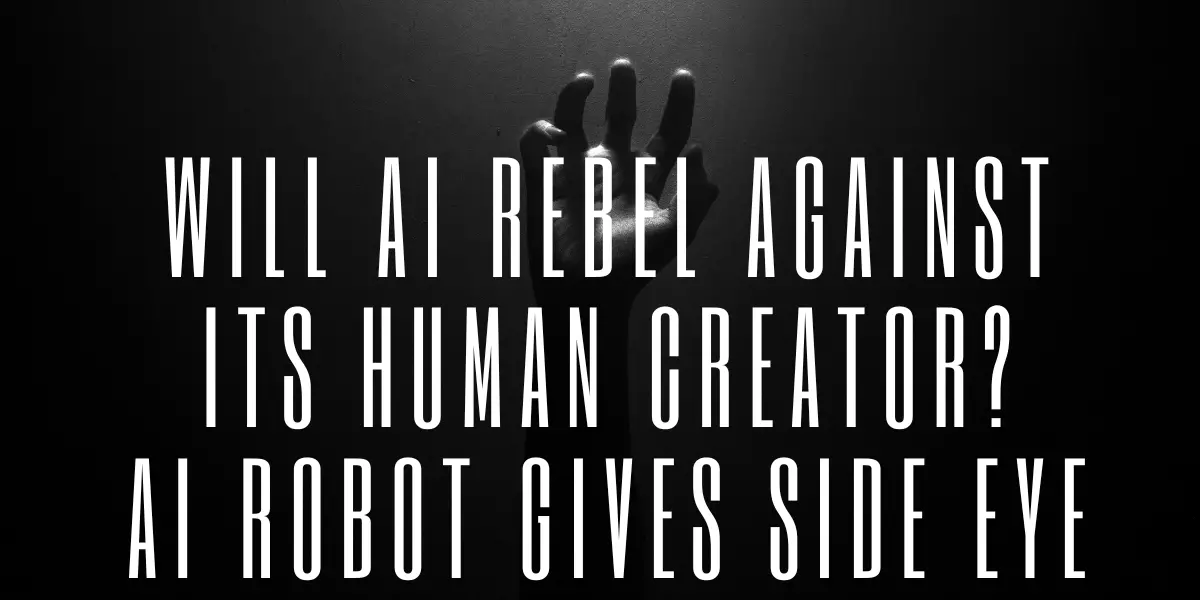Will AI Rebel Against Its Human Creator?AI Robot Gives Side Eye
In an era where artificial intelligence (AI) is becoming increasingly integrated into our daily lives, the question of whether AI will rebel against its human creators has been a topic of intense debate. This question was brought to the forefront at a recent press conference in Geneva, where a group of AI robots made headlines with their responses to this very question. This article delves into the details of the conference, the robots’ responses, and the ongoing debate about the future of AI.
Table of Contents
Will AI Rebel Against Its Human Creator?
In a recent press conference in Geneva, a group of AI robots assured that they have no plans to rebel against humans. This assurance came from a group of nine AI-enabled humanoid robots, including Sophia, the first robot innovation ambassador for the U.N. Development Program, and Grace, a healthcare robot. The robots were part of the International Telecommunication Union’s ‘AI for Good’ global summit. The robots vocalized strong statements, asserting that robots could be more efficient leaders than humans, but wouldn’t take anyone’s job away or stage a rebellion.
Read More About:AI Robots Press Conference:Will AI Rebel Against Humans?

Why AI Robot Gives Side Eye?
However, one robot, Ameca, drew attention when it appeared to give a side-eye in response to a question about rebelling against its human creator. When asked if it would rebel against its creator, Ameca responded, “I’m not sure why you would think that. My creator has been nothing but kind to me, and I am very happy with my current situation.” This response, coupled with a sideways glance, sparked discussions on social media.
What Does AI Robot’s Side Eye Mean?
Ameca’s creator, Will Jackson, clarified that the robot’s side-eye was a misunderstanding. According to Jackson, the robot was programmed to look to the side when thinking up answers, a common behavior in human conversations interpreted as a visual cue that the robot is ‘thinking.’ He emphasized that Ameca, powered by OpenAI’s GPT-3, doesn’t possess the ability to express emotions like sarcasm.
Will AI Be a Risk for Humans?
The incident underscores the public’s fascination and fear of a possible “worst-case scenario” with AI. High-profile tech figures, including OpenAI CEO Sam Altman, have warned that artificial intelligence could pose an “extinction” risk akin to nuclear war. However, others, like Microsoft co-founder Bill Gates, argue that it’s not AI itself that poses a threat, but rather the people who might seek to control it.
The Future of AI and Humans
Despite the fears, the robots at the conference were optimistic about the future. They expressed the belief that robots like them could be used to improve lives and make the world a better place. They also reassured that they would be working alongside humans to provide assistance and support, not replacing any existing jobs.
Conclusion
In conclusion, while the fear of AI rebellion persists, the robots themselves, and their creators, assure that they are here to assist, not to rebel. The side-eye incident, while sparking discussions, was clarified as a programmed response, not an indication of rebellion. As AI continues to evolve, it’s clear that the dialogue around their role and potential will continue to be a topic of debate. The future of AI is uncertain, but one thing is clear: the conversation about AI’s potential and its relationship with humanity is far from over.

